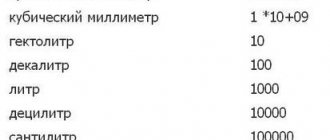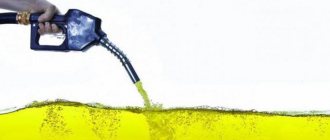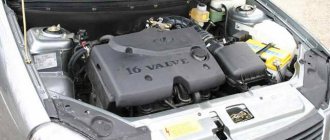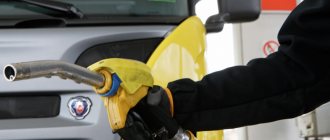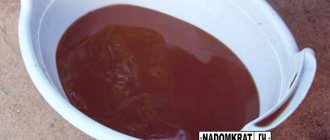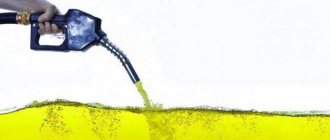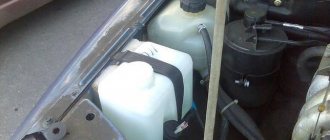Basics of the physical meaning of transformation
The physical meaning of the transformation is not a big problem. In this case, the conversion method for any gas is similar to that for liquids and bulk materials. The calculation is made according to the following method:
1 m³ = 1,000 liters
Accordingly, 1 liter contains 0.001 cubic meters. If the meter shows that natural gas was consumed in the amount of 0.3 m³ during the day, then in liters this value will be 0.3 x 1000 = 300.
General parameters influencing the volume of fuel burned
The amount of fuel for heating a home is calculated either in liters or in cubic meters. If gas is supplied to a residential building via a centralized gas supply system, then accounting is carried out in cubic meters.
When connecting a house to an autonomous heating system, natural liquefied gas is used in cylinders and records are kept in liters.
For the same area of the home, fuel consumption for heating depends on several parameters:
- year of construction;
- number of floors;
- construction materials;
- design features of window and door openings;
- type of heating unit.
Walls, roof, doors and windows are sources of heat loss. No powerful heating boiler will save you if the doors and windows do not close tightly, if there are cracks in the wall seams and ceiling. When installing a gas boiler in a house, measures are required to restore the thermal insulation.
Features of the conversion of liquefied gases
In modern industry, liquefied gases are used in the following areas:
- at industrial enterprises;
- in the production of heat and electricity;
- as reserve stocks during the cold season when consumed by the population;
- as an alternative fuel for vehicles;
- at home.
At home, liquefied gas cylinders are used if there is no centralized mains connected to the house. In this situation, the temperature of the supplied fuel is not taken into account, but only the volume is determined. In some cases, in some regions, temperature corrections may be applied when calculating volume if the meter is not equipped with an appropriate device for compensating the readings.
The mixture is prepared by liquefying butane with propane in various ratios. It is not economically feasible to use methane. When the ambient temperature rises to room temperature, this mixture expands with such intensity that the manufacture of cylinders requires the use of thick walls or the use of expensive, high-strength materials.
The proportionality of the transition of the volume of a gas mixture during its evaporation from a liquid state depends on the following indicators:
- chemical elements included in the composition;
- temperature characteristics and pressure level;
- molar mass and degree of density.
It is not possible to determine the exact proportional ratio of the mixture in the cylinder, so an approximate value is taken into account. It is assumed that at a room temperature of 20 degrees, considered standard, when one liter of fuel evaporates in a liquefied consistency, about 200 gases will be released.
The calculation is performed using the following formula:
Vcube = Vl/5,
- Vcub – volume indicator in cubic meters;
- Vl – indicated value in liters.
When performing the calculation, you should clarify the obtained value, based on the fact that according to safety rules, gas containers are not filled to 15 percent of the total volume.
If we calculate the number of cubes in a filled propane-butane cylinder holding 50 liters when connecting a gas meter, we get the following value:
- 21 kg of gas is pumped into the cylinder;
- the number of cubic meters of gas fuel is 50/5 = 10;
- after adjustment due to incomplete filling of the cylinder, we get the value 10 x 0.85 = 8.5 cubic meters.
The obtained value depends on the ambient temperature, since this indicator affects the pressure level inside the container.
The above calculation provides only an approximate answer. But the molar mass of the gas and its calorific value are of decisive importance in determining the indicators for the use of liquefied gaseous fuel. In this case, gas is calculated in kilograms.
Cubic meters are taken into account only when supplying gaseous fuel in a centralized manner, when determining the consumed volume using an individual metering device. In this case, the conversion from cubic meters to liters is carried out in the standard way, multiplying by 1000.
Bath capacity
How many liters of diesel fuel are in 1 ton: how to convert mass into volume
Everyone loves to take a hot bath. But not everyone thinks about the volume of water required for this procedure.
The question about the capacity of the bathtub cannot be answered in monosyllables.
Modern industry produces three types of bathtubs, depending on the material used:
- Made of cast iron.
- Made from acrylic.
- Of steel.
The volume of a product is determined by multiplying its length, width and height.
But it is not always possible to accurately calculate this value, especially when it comes to acrylic bathtubs.
Sometimes performed in an irregular shape, following the contours of the human body, including built-in hoops for holding hands and other delights that make it difficult to accurately determine the volume.
Without boring the reader with lengthy calculations and a large number of numbers, it can be noted that the capacity of the font ranges from one hundred and forty for the smallest models, to two hundred and fifty for huge bathtubs.
The exact parameters are indicated by the manufacturer in the passport of a specific model.
Considering the significant water consumption when taking a bath regularly, a good way to save money is to use a shower. This procedure will require three times less water - about 40.
It is estimated that if you switch from regular bathing to using a shower, the annual savings will be about 37 cubic meters of water.
Another way is to use pre-collected water.
There are many original shower design options on the Internet, including a homemade bucket attached to a hoop, filled with water and turned over using an attached chain.
If you first fill a container with water for washing dishes, washing your face, brushing your teeth for other purposes, you will end up with significant savings.
It is estimated that up to fifteen liters of water escape through an open tap every minute; in an hour this volume will be ninety liters - a considerable consumption.
Considering that more liquid when used by washing dishes and washing under an open tap is wasted, it is worth using the above method to significantly reduce consumption.
Research has established that one person requires about 1000 cubic meters of water annually, if we take into account the costs of producing the goods and products he uses.
But everyone can reduce this figure a little if they take measures to save water in their own home.
And the calculation of the conversion of units will be of considerable help in this regard, in order to represent the scale of the volume of liquid consumed in vain.
How does a liter compare to a cubic meter?
The liter is a measure of capacity that is not included in the international SI system, but is used very widely. Moreover, it is the liter, and not the “abstract” cubic meter, that is the most common unit of volume measurement in everyday life. For example, it is measured in liters:
- capacity of various vessels intended for household use (buckets, pans, bottles, canisters, containers);
- trunk volume of passenger cars,
- internal volume of refrigerators, freezers, microwaves and ovens;
- capacity of city and tourist backpacks.
The "official" definition of a liter has changed several times. From the beginning of the 20th century until 1964, according to the decision of the General Conference on Weights and Measures, a liter was defined as the volume occupied by a kilogram of water. However, this definition turned out to be not very convenient: the ratio of the volume and mass of a liquid depends on many factors - from atmospheric pressure to air humidity. Therefore, experts abandoned the “reference” to the mass of water. And now a liter means a volume that exactly corresponds to a cubic decimeter - the volume of a cube, each edge of which has a length equal to exactly 10 centimeters, which corresponds to 0.1 meters.
Counting by meter
The topic of paying for water by meter is becoming more and more relevant. Those who have installed metering devices in their apartment or house really want to know in digital terms whether there are savings. To carry out the calculation, you need to take water meter readings and know the tariffs accepted directly in your region.
After a month, look at the value on the meter. Now you can calculate how much you spent and what you paid based on regional rates. Since rates may change annually, please be careful.
By multiplying the indicators separately by the tariffs for hot and cold water, you can get the correct value. Enter the readings from the meter into payment receipts and transfer them when paying at the bank or online. You need to use the method that is convenient for you.
Be sure to transmit testimony during absence: vacation or stay at the dacha. Now there are many ways to transfer data. This includes the Internet and SMS. You can transfer data via payment receipts.
In any case, this will help you avoid unpleasant situations when, after a month, you have to pay for water according to the standard. Although next month, when transferring data, you will be recalculated.
Having become familiar with your monthly water consumption, you can start saving it. According to statistics, about 80% of water is wasted. We are, of course, not talking about the need to cook, wash dishes, do laundry and wash up. You need to carefully monitor that the taps do not leak, so that water does not leak into the toilet. All these simple recommendations will help you save both water and money.
How many liters in a cubic meter: conversion formula
So, a liter is equal to a cubic decimeter (dm^3). In order to calculate the volume of a cube, you need to raise the length of the edge to the third power. A decimeter is equal to 0.1 meters. That is, liter = 0.1 m X 0.1 m X 0.1 m = 0.001 m^3 (one thousandth of a cubic meter).
Thus, one thousand liters “fit” in a cubic meter. And the formula for converting one unit to another will be very simple:
- volume in cubic meters X 1000 = volume in liters.
- volume in liters / 1000 = volume in cubic meters.
By the way, sometimes (extremely rarely, since large volumes of liquids or bulk mixtures are most often measured in “cubes”) to denote a volume equal to a cubic meter, the derivative “kiloliter” can be used, where the prefix kilo- just means a thousand.
Operating and Maintenance Costs
Well-regulated gas equipment requires virtually no maintenance, since neither liquefied nor main gas forms carbon deposits and soot. Preventive maintenance and control inspections are carried out regularly regardless of the type of fuel, and the costs are approximately the same.
Liter (l) to cubic meter (m³), metric unit
Operating costs when using liquefied gas may include electricity costs if the system uses electrically heated evaporators. Evaporators are installed in powerful industrial systems to increase the rate of formation of the vapor phase, as well as with ground-based gas holders, since the natural evaporation of the butane component stops at subzero temperatures.
But electric evaporators are usually used in systems with relatively little gas consumption, and they do not consume as much energy. High-performance systems use liquid-heated evaporators, the heat for which is produced by burning the same liquefied gas.
So, the operating and maintenance costs for systems running on mainline and liquefied gas are almost the same.
How to convert cubic meters to liters and vice versa: examples of calculations
Example 1. The packaging of plastic garbage bags indicates that their volume is 30 liters. What is the capacity of such a package in cubic meters?
Simple solution : 30/1000 = 0.03. The volume of the package is 0.03 (three hundredths) cubic meters.
Step by step, this solution can be described as follows: 30 liters = 30 dm^3 = 30 X 0.1 m^3 = 30 X 0.001 m^3 = 0.03 m^3.
Example 2. According to statistics, on average in Russia one person uses 6 cubic meters of water per month. How many liters of water will an “average” family of three use per day, if we assume that there are 30 days in a month?
Calculation option: A family of 3 people will use 6 X 3 = 18 cubic meters of water per month. Let's convert cubic meters into liters, multiply by 1000 - and we end up with 18,000 liters per month. Divide by the number of days in a month: 18,000 / 30 = 600. As a result, it turns out that the daily water consumption for the family as a whole will be 600 liters.
Example 3 . The size of the bowl of the children's inflatable pool is 2 x 3 meters, the depth of the pool is 1 meter. How long will it take to fill it to the brim if water flows into it at a rate of 30 liters per minute?
Calculation option: Let's calculate the capacity of the pool in cubic meters. 2 m X 3 m X 1 m = 6 m^3. Let's convert to liters: 6 X 1000 = 6,000 liters. It remains to divide the volume in liters by the amount of water flowing per minute: 6,000 / 30 = 200 minutes. Thus, the pool will fill in 200 minutes (3 hours 20 minutes).
The number of liters contained in a cubic meter of gas is not as simple a question as it might seem at first glance, given the peculiarities of using gas fuel. Let's consider ways to convert the volume of gases used as fuel, taking into account their characteristics.
How long will a gas cylinder burn?
On average, a bottle lasts for 2-3 days. In order not to wake up in a cold house, you can purchase a gas ramp and connect several propane cylinders: 2 main and 2 backup, for example, or you can purchase an RP-2 cylinder unit.
Interesting materials:
What promotes muscle growth? What promotes collagen production? What promotes melatonin production? What stimulates hormone production? What are the limits for waste disposal? Answer? What is included in administrative costs in Ukraine? What is included in proteins and carbohydrates? What's included in Doom Eternal Deluxe Edition? What's included in Injustice 2 Legendary Edition? What is included in travel expenses 2022?
Physical meaning of translation
In a physical sense, everything is quite simple. The translation is carried out in the same way for any gases, liquids or bulk materials as follows:
- 1 cubic meter contains 1000 liters,
- 1 liter equals 0.001 cubic meters
- the table shows the quantity contained in 1 cube (1 cube = 1000 cubic decimeters, etc.).
For example, 15 cubic meters of natural gas used by the meter equals 15,000 liters. When converting these values, the temperature of the fuel, the amount of impurities and other factors do not matter.
Price issue
In the Chelyabinsk region, the cost of 1 cubic m3 of natural main gas is 6.15 rubles/m3.
Liquefied mixture in cylinders, without delivery, depending on the area is 16.82 - 19.26 rubles per kilogram.
Monopolists only raise prices. It's time to reduce the burden on the consumer wallet. The insulation of windows and doors is discussed above. But other methods have been developed. The measures will add comfort to your home and reduce heating costs.
The amount of fuel for heating an individual home is reduced by any of three measures, or by the whole complex:
- 1. A simple measure - installing a thermal curtain in the entrance block. Such models do double duty. In winter, the device cuts off cold air from the street; in summer, the unit is turned on for cooling, at the same time preventing the appearance of insects in the rooms. Thermal curtains are equipped with overheating protection and a remote control.
- Expensive, but not difficult to implement - heated floors, which require heating water at half the temperature of radiator heating. Water floors are inexpensive, and they have the advantage of heating the air without drying it out. However, remember that water floors, according to the rules, are installed only in a private house. In apartment buildings, the option of cable or film flooring is being considered.
- Even in a house of 100 square meters. m will justify the installation of automatic control of heat supply depending on the outside temperature and the presence of people in the house.
Use of liquefied gas
It’s a little more complicated with liquefied gas. It is widely used:
- in modern industrial production;
- in thermal and electric power engineering;
- as a reserve stock during the period of the most intensive consumption by the population;
- as a replacement for traditional gasoline or diesel fuel for road transport;
- for domestic purposes.
In the household, it is advantageous to use liquefied gas in cylinders for the operation of gas-consuming household appliances, provided there is no centralized supply line.
Various mixtures of propane and butane are used for liquefaction. The use of methane is not economically profitable, since at room temperature the pressure in the system increases so much that to ensure safety it is necessary to create containers with large wall thicknesses and use materials of increased strength.
The change in gas volume during the transition from the liquid phase to the gaseous phase is determined by the following factors:
- chemical composition;
- pressure;
- temperature;
- density and specific gravity.
To calculate the number of liters of liquefied gas per cubic meters of fuel that have turned into a gaseous state, it is necessary to use the specified characteristics. But since it is difficult to reliably establish the exact composition of the mixture in the cylinder, it is necessary to be guided by an approximate ratio, according to which at a standard temperature of 20 degrees, 1 liter of liquefied gas will produce 200 - ordinary gas. Therefore the formula applies:
Okub = Ol/5
- Cube – volume in cubic meters;
- Ol – volume in liters.
When making calculations, it is necessary to additionally take into account that, for safety reasons, gas cylinders are filled to no more than 85 percent of the total volume.
Tariffication of heating in Kemerovo
Heating tariffs in the city of Kemerovo have changed significantly over the past few years. Currently, this tariff is calculated based on the actual amount of hot water consumption by the population of the Kemerovo region and the city of Kemerovo in particular. The heating system includes direct thermal energy, as well as its conductor, which is water circulating through the batteries.
The cost of heating in the Kemerovo region depends on such metrics as:
- price of cold water;
- price of thermal energy;
- internal expenses of the management company
Calculation example
It is necessary to determine how many cubic meters of gas one cylinder with a 50-liter propane-butane mixture contains if you pass its contents through a gas meter:
- the mass of the gas mixture pumped into it is about 21 kilograms;
- volume in m³ is equal to 50/5 = 10;
- after adjusting for the filling of the cylinder, we get 10 × 0.85 = 8.5 m³.
This indicator may vary depending on the ambient temperature, since when it decreases, the pressure inside the container decreases, with a corresponding decrease in the volume of fuel.
But the use of liters of gas in cubic meters is only relevant as an approximate calculation. When purchasing this type of fuel, kilograms of the gas mixture and the pressure inside the container are important, and when using individual metering devices, a standard unit of measurement is used - cubic meters, the conversion procedure of which does not depend on the composition of the gas and is determined by a simple arithmetic calculation in the ratio of 1 to 1000.
How to calculate how many cylinders are needed to heat 1 square meter. living space during the heating season? How to effectively heat a private house using gas cylinders, will it be profitable?
You need to know the density of propane to determine the volume in cubes, and you also need to take into account temperature and pressure.
There are 1000 liters in one cubic meter.
We further assume that liquefied propane has a density of 508 g/l.
Its molecular weight is 44 grams/mol (all these indicators can be found in special reference books and tables).
Divide one number by another.
508: 44 = 11.5 (with a small remainder, 11.5 is the amount of g/mol of gas in one liter of liquefied propane).
That's it, now we find out what volume this amount of propane (liquefied, during evaporation) will occupy; if the conditions are normal (temperature, pressure), then this is 22.4 cubic meters.
Now multiply g/mol (11.5) by volume (22.4 liters).
We get 11.5 x 22.4 = 257.6 liters.
There are 1000 liters in a cube, divide 1000: 257.6 = 3.8 liters (with remainder).
We have one liter in question.
Divide 1 by 3.8 = 0.263 (again with the remainder) cubic meters of gas (in this case, liquefied propane) in one liter.
But most often in household gas cylinders, a mixture of propane and butane is used, where the weight and volume indicators are already different.
- In 1 liter of pure liquefied propane there is 0.263 m3 of free propane gas. But we do not receive pure propane gas at retail points of sale. We are offered a mixture of propane and butane. From 1 liter of such a gas mixture you will get 0.230 m3 of free gases at room temperature. At sub-zero temperatures, even less, since butane may not evaporate at all, liters of propane, constituting from 60 to 80% of the mixture, will turn into gas.
- In order to calculate how many cylinders are needed to heat your premises, you need to know at least two parameters - the volume of the cylinders and the power of your boiler. And of course, indirect adjustments will be made by the area and a practical assessment of the efficiency of the entire heating system. Cylinders are mainly used with a standard volume of 50 liters. The useful displacement of 43 liters is swept away. Multiplying by 0.232 we get 9.89 cubic meters of gas in each cylinder. Next, we look at the manual (instructions for the boiler) and look at its maximum gas volume consumption per hour. Of course, the outside temperature will not be as low as possible throughout the entire heating season, and the boiler will only operate at full capacity. The average value can be taken as 80% of the maximum boiler power, even in fairly cold regions. We calculate the total amount of boiler operation during the heating season.
- Now about the benefits of heating with gas from cylinders. The most important condition for profitability is logistics and gas price. Profitability is always “made” by any even the slightest conditions for reducing the cost of production. For example, wholesale gas delivery will be cheaper than replacing each pair of cylinders weekly. The remoteness of the gas filling station also matters (no one has yet canceled transportation costs). Strict control over the quality of the product (proper pressure and quality of the mixture, preference for bona fide suppliers) will help to “squeeze” more calories out of the product for the same money. Heating cylinders with a propane-butane mixture helps to have up to 20% more fuel mixture. The problem is that propane evaporates faster. And if you heat the cylinder using a warm air mixture supplied from the boiler, for example through corrugated pipes, or heat it in other safe ways, then you can make butane evaporate more intensely, and this is also your money. If you want, even at the maximum possible capacity of gas cylinders you can have a certain percentage and here's why. Several times I drained liquid condensate of unknown consistency from empty cylinders, turning them upside down. And such condensate can amount to almost two liters, and with large volumes of bottled gas consumption this is not a small loss in the weight of the clean gas and, accordingly, lost calories. You just need to approach this wisely. Don't be wasteful. By definition, gas is the cheapest type of fuel, and if you use its energy wisely, it will be profitable.
Molecular weight - common substances
The molecular mass of a substance, also called molar mass, M, is the mass of 1 mole of that substance, expressed in M grams.
In the SI system the unit of M is [kg/kmol], and in the English system the unit is [lb/lb-mol], while in the CGS system the unit of M is [g/mol]. Molecular weight is represented by the same number in all systems of units, regardless of the system used. For this reason, in many cases the molecular weight unit is not specified; however, it should be understood that this is not a dimensionless parameter.
The molecular weight of a pure compound is determined by its chemical formula and the atomic weight of its elements. The atomic weights of elements found in organic matter are C=12.011, H=1.008, S=32.065, O=15.999 and N=14.007.
Example: Molecular weight of ethanol (C 2 H 5 OH) To calculate the molecular weight of ethanol, the molecular weight of each atom in the molecule is summed:
M ethanol = 2 * 12.011 [kg/kmol] + 6 * 1.008 [kg/kmol] + 1 * 15.999 [kg/kmol] = 46.069 [kg/kmol]
See also Physical Data for Hydrocarbons, Physical Data for Alcohols and Carboxylic Acids, Physical Data for Organic Nitrogen Compounds, and Physical Data for Organic Sulfur Compounds
| Substance | Molecular mass [kg/kmol] [g/mol] [lb/lb-mol] | ||
| Acetylene, C 2 H 2 | 26.038 | ||
| Air | 28.966 | ||
| Ammonia (R-717) | 17.02 | ||
| Argon, Ar | 39.948 | ||
| Benzene | 78.114 | ||
| n - Butane, C 4 H 10 | 58,124 | ||
| 1.2 - Butadiene | 54,092 | ||
| 1-butene | 56,108 | ||
| cis-2-butene | 56.108 | ||
| trans-2-butene | 56.108 | ||
| Butylene | 56.06 | ||
| Carbon dioxide, CO 2 | 44. 01 | ||
| Carbon disulfide | 76,13 | ||
| Carbon monoxide, CO | 28,011 | ||
| Chlorine | 70,906 | ||
| Cyclohexane | 84,162 | ||
| Cyclopentane | 70.135 | ||
| n - Dean | 142,286 | ||
| Deuterium | 2,014 | ||
| 2,3 - Dimethylbutane | 86,178 | ||
| 2,2 - Dimethylpentane | 100,205 | ||
| Diisob45 114.232 | |||
| Duoderan | 170,21 | ||
| Ethane, C2H6 | 30,070 | ||
| Ethen | 28.05 | ||
| Ethanol | 46,07 | ||
| Ethylbenzene | 106,168 | ||
| Ethyl chloride | 64,515 | ||
| 3 - Ethylpentane | 100,205 | ||
| Ethylene18H2 | 28,054 | ||
| Fluorine | 37,996 | ||
| Helium, He | 4,002602 | ||
| n - Heptane | 100. 205 | ||
| n - Hexane | 86,178 | ||
| Hydrochloric acid | 36,47 | ||
| Hydrogen, H2 | 2,016 | ||
| Hydrogen chloride | 36,461 | ||
| Hydrogen sulfide | |||
| Hydroxyl, OH | 17,01 | ||
| Isobutane (2-methylpropane) | 58,124 | ||
| Isobutene | 56.108 | ||
| Isooctane | 210,63 | ||
| Isopentane | 72,151 | ||
| Isoprene | 68,119 | ||
| Isopropylbenzene | 120,195 | ||
| Methyl alcohol | 32,04 | ||
| Methylbutane | 72.15 | ||
| Methyl chloride | 50,488 | ||
| Methylcyclohexane | 98,189 | ||
| Methylcyclopentane | 84,162 | ||
| 2 - Methylhexane | 100. 205 | 2 - Methylhexane | 100.205 |
| 19,00 | |||
| Neon, Ne | 20,179 | ||
| Neohexane | 86.178 | ||
| Neopentane | 72,151 | ||
| Nitric oxide, NO | 30,006 | ||
| Nitrogen, N 2 | 28,0134 | ||
| Nitrous oxide, N2O | 44,013 | ||
| n - Nonan | 128,259 | ||
| n — Octane | 114,232 | ||
| Oxygen, O2 | 31,9988 | ||
| Ozone | 47.998 | ||
| n - Pentane | 72,151 | ||
| Pentylene | 70.08 | ||
| Propane, C 3 H 8 | 44.097 | ||
| Propen | 42.081 | ||
| Propane | 42,08 | ||
| R-11 | 137,37 | ||
| R-12 | 120,92 | ||
| R-22 | 86,48 | ||
| R-114 | 170.93 | ||
| R-123 | 152,93 | ||
| R-134a | 102,03 | ||
| R-611 | 60,05 | ||
| Styrene | 104,152 | ||
| Sulfur | 32,02 | ||
| Sulfur dioxide (sulfur dioxide) | 64,06 | ||
| Sulfur oxide | 48,1 | ||
| Toluene, toluene | 92,141 | ||
| Triptane | 100.205 | ||
| Xenon | 131,30 | ||
| o - Xylene, xylene | 106,168 | ||
| Water vapor - Steam, H 2 O | 18,02 |
Required layer height
The height of the soil layer in the aquarium can vary from 2 to 10 cm. With a small number of plants, a minimum 2 cm bottom cover is sufficient. When simulating natural sea or river relief, creating a landscape of coral reefs, the thickness of the soil reaches 5 - 10 cm, in addition to its aesthetic function, maintaining the ecological balance of a closed volume.
If the soil is too thick, it can cause acidification of the water. An excess of soil materials is harmful to the aquarium, as well as a lack or absence of it.
If there are a large number of plants, the insufficient thickness of the substrate will become an insurmountable obstacle to the development and fixation of the root system of the aquarium flora.
